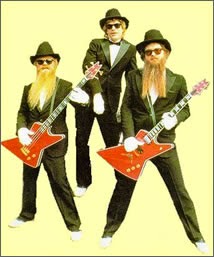The Epiphone Texan started out as the Epiphone model FT-79 flat top guitar, which the company offered as early as 1942. This model was more of a square-shouldered instrument in the dreadnaught guitar tradition.
Through the years when the Stahopoli owned Epiphone, there was a continuous ongoing rivalry with Gibson. This culminated after the war years.
The family business fell on hard times and the brothers, Epaminondas (known as Epi) and Orpheus (called Orphie) were not getting along with each other. By 1957 Epi had passed away and the company was falling into debt.
 |
| 1958 Epiphone catalog |
Orphie offered the Epiphone business for sale to Gibson. These were the golden years when Gibson was operating out of Kalamazoo. Gibson set about creating three product lines. Gibson, of course, was the star of the line.
Epiphone was now for the budget conscious customer and Kalamazoo was the companies’ basic, no-frills line.
Things have changed since the original Gibson made Epiphones were produced. Now Epiphone is Gibsons offshore brand name and Kalamazoo is only a memory mentioned in a John Fogarty song.
For a while, Epiphone products were offered to music dealers that wanted to get their foot in the door for a Gibson franchise. Althoughit was intended as a cost alternative to Gibson, the Epiphone guitars were very well made and comparable to Gibson instruments.
The Beatles favored Epiphones. Paul McCartney purchased his 1964 FT-79 Texan in 1965. It was a right-handed model, which he flipped over. He learned to play with the strings upside down or right side up.
In photos, it appears the nut and bridge were reversed to accommodate a left-handed player.
When Gibson took the reigns, the Texan remained in their catalog until 1970. Since its inception, the FT-79 has gone through a number of changes. The body of the original model was smaller, more square shouldered and comparable to a Guild F-47.
The headstock was similar, but the Epiphone headstock logo was the metallic version with box type. When Gibson started making the FT-79, in the 1950's, they changed this guitar to a shape that was very similar to the Gibson J-45/J-50.
Which had a large body and sloped shoulders.
The guitar now named the Texan instead of the FT-79 and was essentially the budget model of the Gibson J-45.
However, there were some key differences. The Texan had a 25.5” neck and the J-45 had a 24.75” neck. The Epiphone retained the Epi-style headstock shape, although the letters were now in cursive script.
The fingerboard on the Texan had parallelogram inlays. The pick guard retained the original Epiphone shape, with a “slashed C” or epsilon added to the guard and truss rod cover.
Gibson originally used white buttons on the tuner knobs, but changed them to metal in 1967.
In 1962, an adjustable bridge was added to the guitar. 1967 also brought a change in the body shape, making it square-shouldered once again. In 1970, the Texan ended its run. That is until 1972, when production shifted to Japan for some of Gibson’s budget models.
There a 12-string version was put into production. It was not until 2006 when a Paul McCartney signature version was offered for sale. This was a limited run of 250 guitars made in Bozeman Montana, all signed by Paul. A similar offshore version called the Epiphone Elitist was manufactured for Gibson at the Matsomuka factory. This was a run of 1964 guitars under the McCartney signature. 1964 represented the year Paul's instrument was created. However these instruments were not signed.
A McCartney inspired Texan was developed and sold in 2009. This time manufacturing took place in China and the guitar came with a built-in piezo pick-up and preamp. In May of 1976, Paul McCartney and Wings played a concert in Detroit at the Red Wings Stadium.
The story goes that he either was given a Detroit Red Wings decal or found one in the dressing room. McCartney stuck in on the Texans top where it remains to this day. Among other songs, Yesterday was played on McCartney’s Texan. Other artists that utilized a Texan include Elvis, Kurt Cobain, Graham Nash, and others.
 |
| Hendrix's FT-79 |
One owned by Jimi Hendrix was auctioned in 2010.







































